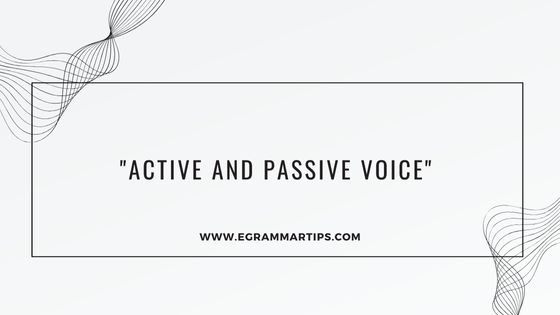
Active Voice and Passive Voice are two ways of constructing sentences based on who performs the action and what the action affects.
Active Voice
In active voice, the subject of the sentence performs the action. The sentence structure typically follows
Subject + Verb + Object.
Example:
John kicked the ball. (John is the subject doing the action)
Passive Voice
In passive voice, the object of the sentence becomes the focus, and the subject performing the action is either mentioned later in the sentence or omitted. The structure usually follows
Object + Verb + (by Subject).
Example:
The ball was kicked by John. (The ball is the focus, not John)
Active Voice: key Rules
•Subject First: The subject, who is performing the action, must come before the verb.
•Direct Action: Active sentences clearly indicate who is performing the action and what the action affects.
•Use in Everyday Language: Active voice is generally preferred for its clarity and engagement in most forms of writing, especially in storytelling and conversational contexts.
Examples of Active Voice in Various Tenses:
- Present Tense: She paints the house.
- Past Tense: He completed the task.
- Future Tense: They will organize the event.
Passive Voice: key Rules
- Focus on the Object: In passive sentences, the action or the recipient of the action is more important than the doer.
- Use Forms of “To Be”: Passive voice always requires a form of the verb “to be” (am, is, are, was, were, being, been) followed by the past participle of the main verb.
- Optional Agent: The agent (the person or thing performing the action) can be included or omitted if it’s not important or unknown. For example, “The letter was sent” is perfectly acceptable without specifying who sent it.
Examples of Passive Voice in Various Tenses:
- Present Tense: The house is painted by her.
- Past Tense: The task was completed by him.
- Future Tense: The event will be organized by them.
Key Differences Between Active and Passive Voice
| Active voice | Passive voice |
|---|---|
| Subject performs the action | object performs the action |
| More direct and engaging | More formal and objective |
| Used in everyday communication | Often used in formal writing |
| Example : ” She wrote the letter.” | Example : ” The letter was written by her .” |
Identifying Active vs. Passive Voice
- To identify active voice:Check if the subject is doing the action.The subject is placed before the verb.
- To identify passive voice:Look for a form of the verb “to be” followed by a past participle.If the object comes before the verb, it’s likely passive.
- Quick Tip:If you can add “by someone” at the end of a sentence, it’s passive. For example, “The cake was baked by Mary.”
Rules for Converting Active Voice to Passive Voice
Step-by-Step Process:
1. Identify the object in the active sentence.
2. Move the object to the beginning of the sentence.
3. Change the verb to the passive form: form of “to be” + past participle.
4. Optionally, include the subject (the doer) after the verb, introduced by “by.”
Active to Passive Conversion
Example:
Active: The chef cooked the meal.
Passive: The meal was cooked by the chef.
Rules for Converting Passive Voice to Active Voice
Step-by-Step Process:
1. Identify the agent performing the action (the “by” phrase or implied subject).
2. Move the agent to the beginning of the sentence.
3. Change the verb to its active form.
4. Place the object after the verb.
Passive to Active Conversion
Example:
Passive: The book was read by Anna.
Active: Anna read the book.
Passive Voice in Different Tenses: Rules and Examples
The passive voice can be used in different tenses, but the structure remains consistent: form of “to be” + past participle.
•Present Tense:
Active: They clean the rooms.
Passive: The rooms are cleaned by them.
•Past Tense:
Active: He fixed the car.
Passive: The car was fixed by him.
•Future Tense:
Active: She will deliver the speech.
Passive: The speech will be delivered by her.
Rules for When to Use Active Voice
Active voice should be your default choice in most forms of writing. It’s particularly useful for:
•Clarity: Active sentences are shorter and easier to understand.
•Engagement: Active voice helps make your writing more dynamic and lively.
•Storytelling: Narratives often use active voice to make the actions of characters stand out.
Examples:
Active: The dog chased the ball. (Clear, direct)
Passive: The ball was chased by the dog. (Less engaging)
Rules for When to Use Passive Voice
Passive voice is used in specific situations, often to shift the focus to the action or the recipient. It’s ideal when:
•The subject is unknown: “The painting was stolen.”
•The subject is unimportant: “Mistakes were made.”
•Emphasizing the action: “The experiment was conducted in a controlled environment.”
Examples:
Active: The researchers conducted the experiment.
Passive: The experiment was conducted by the researchers. (Focus is on the experiment, not the researchers)
Common Mistakes with Passive Voice
Using passive voice too frequently can lead to issues like:
•Wordiness: Passive constructions are often longer and more complicated than their active counterparts.
•Vagueness: Overuse of passive voice can obscure the subject of the sentence, making it unclear who is responsible for the action.
•Unclear agents: In passive sentences, the subject is sometimes omitted, which can confuse the reader.
Example:
Unclear Passive: The rules were broken. (Who broke them?)
Clear Active: The team broke the rules.
Conclusion
Mastering the rules of active and passive voice allows you to choose the most effective sentence structure for any context. Active voice is direct, clear, and engaging, making it the best choice for most writing. Passive voice, on the other hand, is ideal for formal, scientific, or objective writing when the action or recipient is more important than the doer.